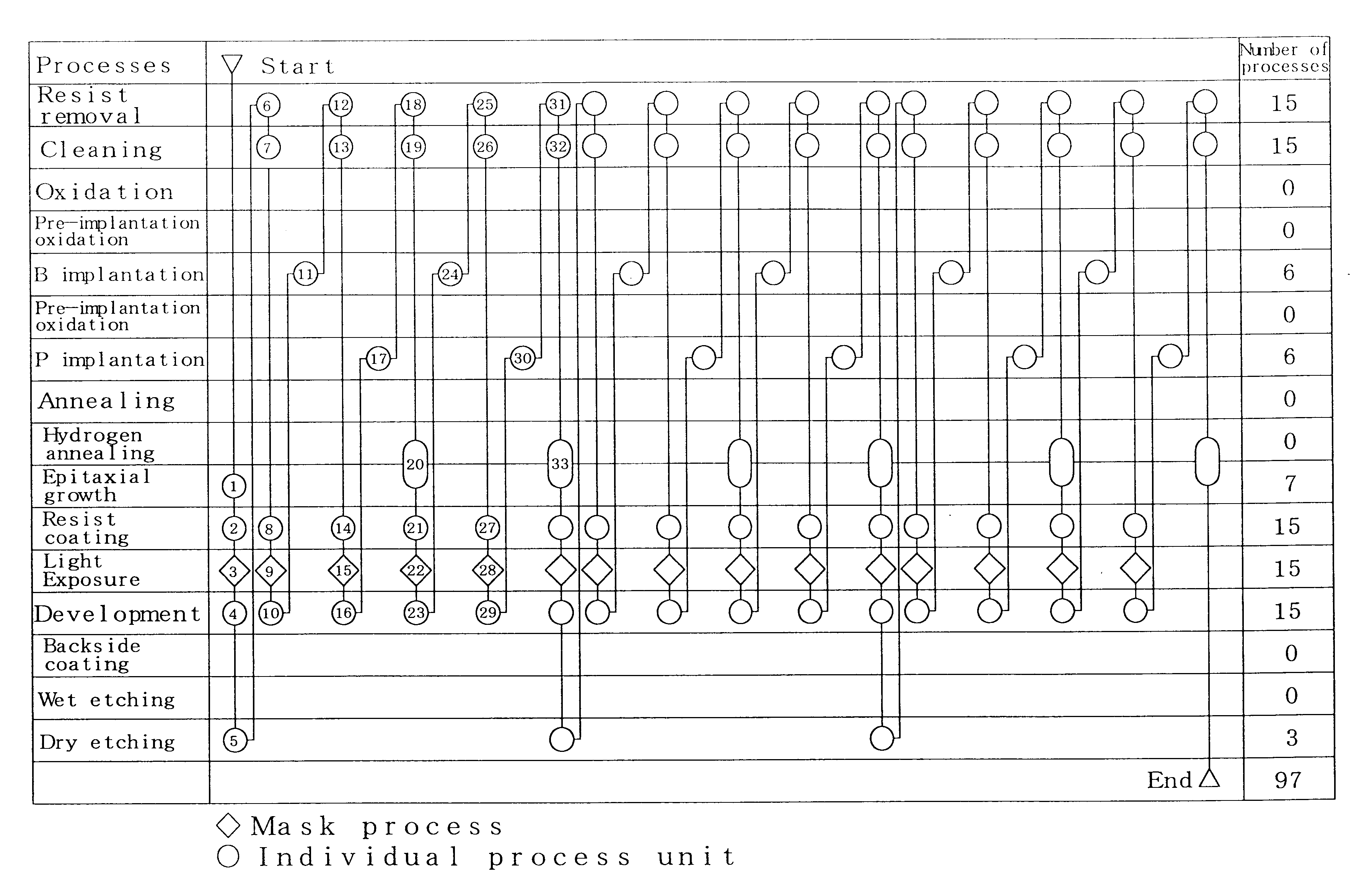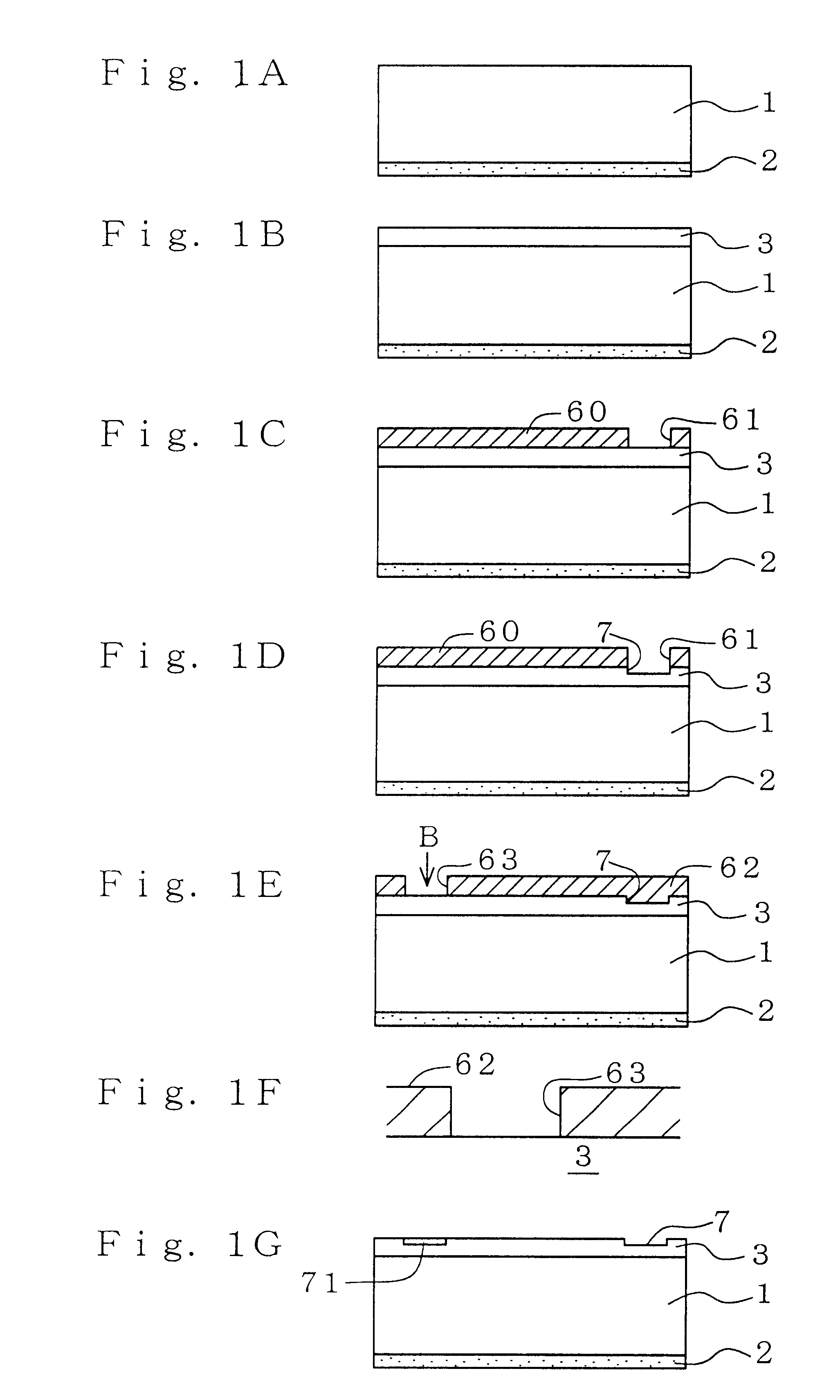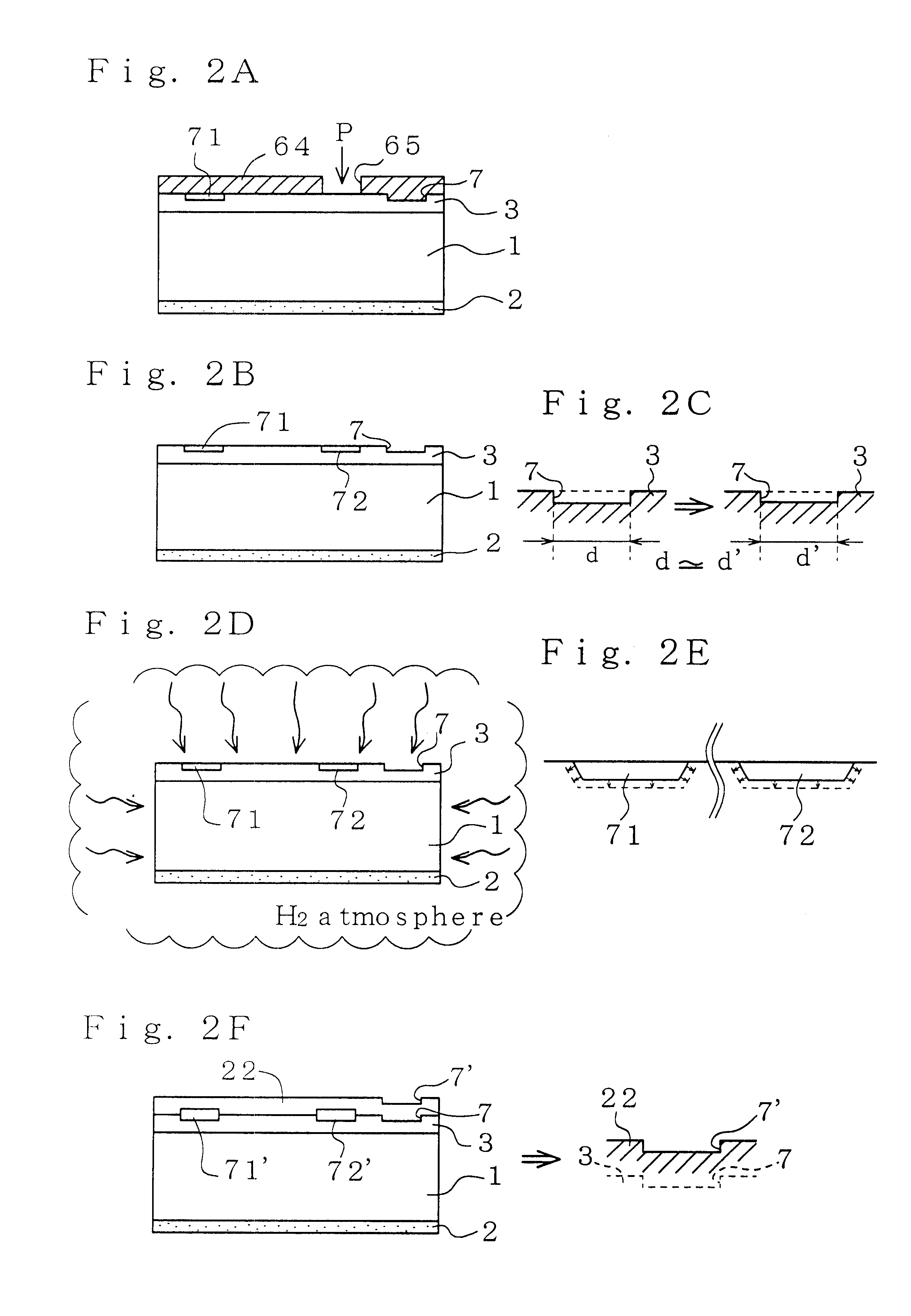Production method for silicon epitaxial wafer and silicon epitaxial wafer
- Summary
- Abstract
- Description
- Claims
- Application Information
AI Technical Summary
Problems solved by technology
Method used
Image
Examples
referential technical example 1
A referential technique will be explained referring to FIGS. 14A to 17. FIG. 17 is a process flow chart showing an exemplary case forming 6 buried layers.
First as shown in FIG. 14A, a silicon single-crystalline substrate 1 having on the backside thereof a backside oxide film 2 formed typically by the CVD process is obtained. In this embodiment, the silicon single-crystalline substrate 1 (simply referred to as "substrate 1" hereinafter) is an n.sup.+ -type (high concentration n-type) substrate doped with antimony so as to attain a resistivity of 0.010 to 0.015 .OMEGA..multidot.cm and has crystal axis orientation, while being not limited thereto. Next, as shown in FIG. 14B, an n.sup.- -type first silicon epitaxial layer 3 (also simply referred to as "epitaxial layer 3" hereinafter) is grown in vapor phase on the major surface of such silicon single-crystalline substrate 1. Here the silicon single-crystalline substrate 1 is placed in a vapor-phase growth apparatus, and prior to the gr...
embodiment 1
(Embodiment 1)
An embodiment of the present invention will be described referring to FIGS. 1A to 4B. FIG. 3 is a process flow chart showing an exemplary case forming 6 buried layers.
First as shown in FIG. 1A, a silicon single-crystalline substrate 1 having on the backside thereof a backside oxide film 2 formed typically by the CVD process is obtained. Next, as shown in FIG. 14B, an n.sup.- -type first silicon epitaxial layer 3 is grown in vapor phase on the major front surface of such silicon single-crystalline substrate 1 (process step 1 in FIG. 3). The process steps and conditions are entirely the same with those for the foregoing Referential Technical Example.
Next, as shown in FIG. 1C, a photoresist film 60 (thickness: approx. 1.2 .mu.m, for example) for forming a solid alignment mark is formed. A pattern for the solid alignment mark is copied on the photoresist film 60 by the light exposure and development processes, to thereby form a pattern opening 61 and form a mask for formin...
embodiment 2
(Embodiment 2)
Next, an embodiment according to the second aspect will be explained.
As shown in FIGS. 1A to 1G and FIGS. 2A to 2F, the solid mark 7 (transfer source solid alignment mark) on the first epitaxial layer 3 well keeps the shape even after one process cycle for forming one buried layer is completed (FIG. 2C). Thus, when the second epitaxial layer 22 is stacked thereon, the profile of such lower solid mark 7 is copied thereto in a relieved manner as shown in FIG. 2F without being seriously deformed. This allows the copied mark to be used as a new solid alignment mark 7' (that is, available as a copied solid mark), when the process cycle of the ion implantation and the vapor-phase growth is repeated while assuming the second epitaxial layer 22 as a new first epitaxial layer.
Hence in the process cycle for forming the second boron-buried layer and the phosphorus-buried layer, the steps for forming the solid mark (process steps 2 to 7 in FIG. 3) are omissible, which ensures furt...
PUM
 Login to View More
Login to View More Abstract
Description
Claims
Application Information
 Login to View More
Login to View More - R&D
- Intellectual Property
- Life Sciences
- Materials
- Tech Scout
- Unparalleled Data Quality
- Higher Quality Content
- 60% Fewer Hallucinations
Browse by: Latest US Patents, China's latest patents, Technical Efficacy Thesaurus, Application Domain, Technology Topic, Popular Technical Reports.
© 2025 PatSnap. All rights reserved.Legal|Privacy policy|Modern Slavery Act Transparency Statement|Sitemap|About US| Contact US: help@patsnap.com



